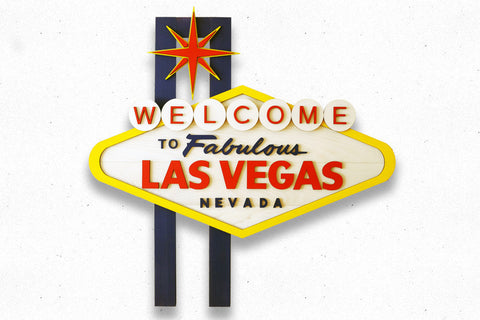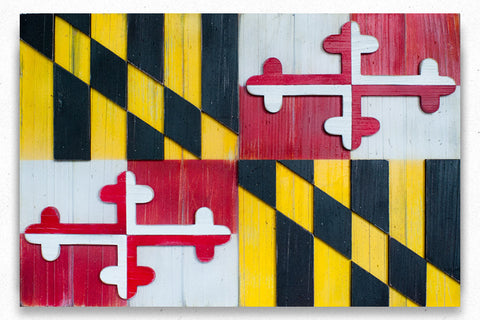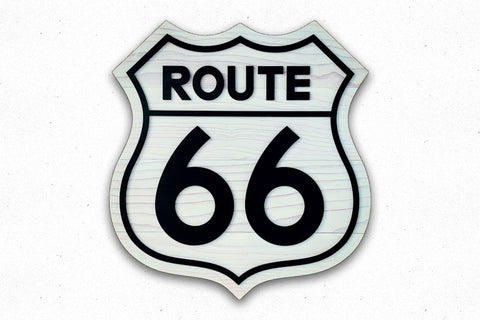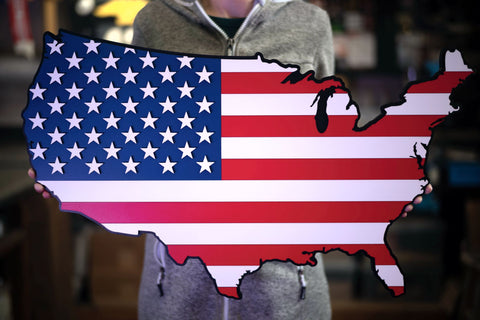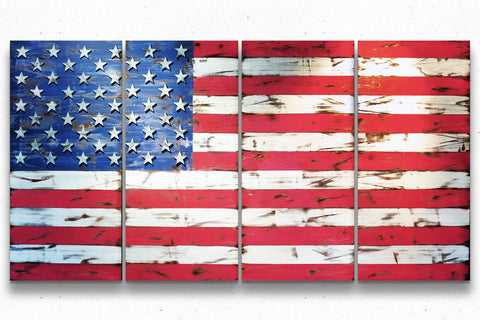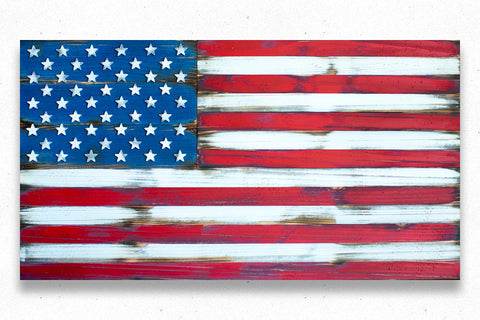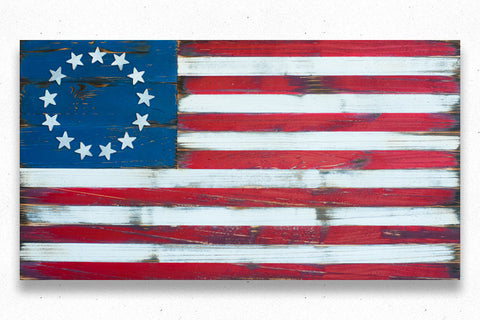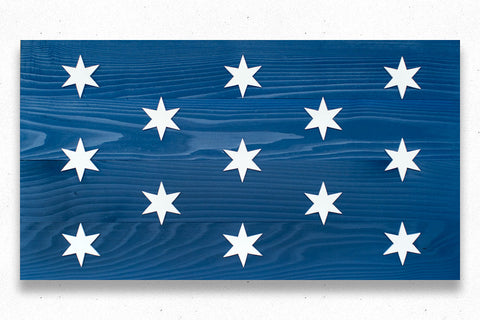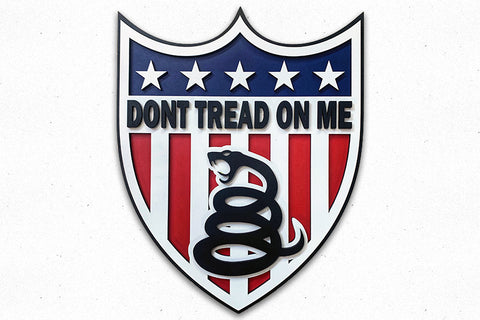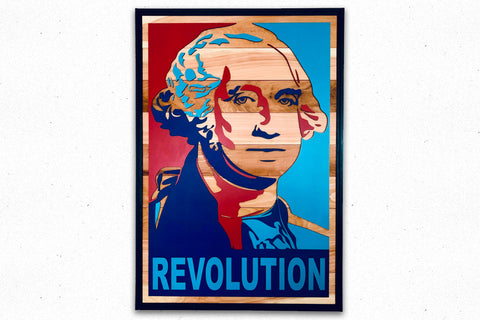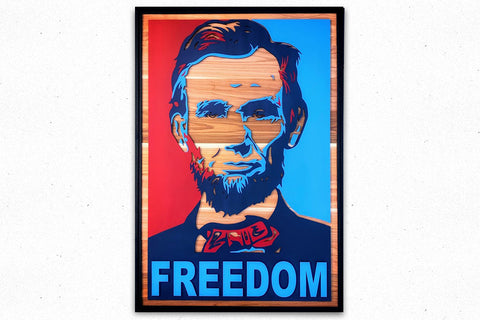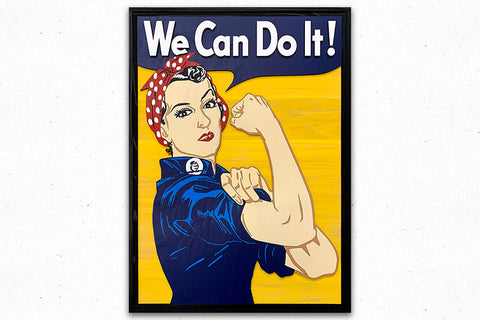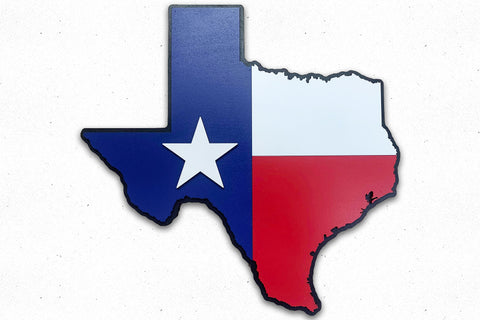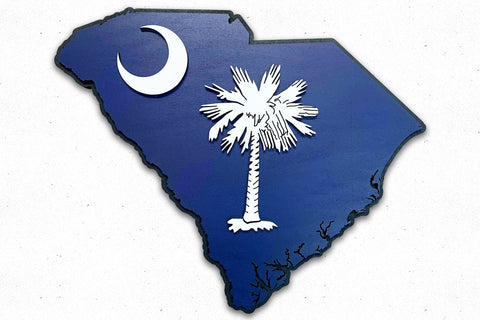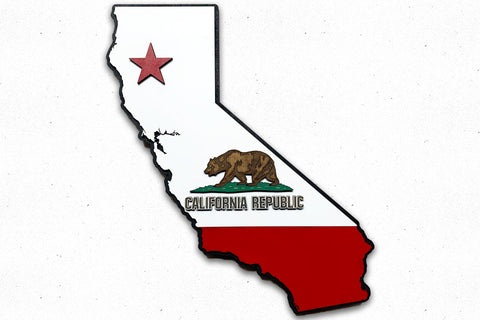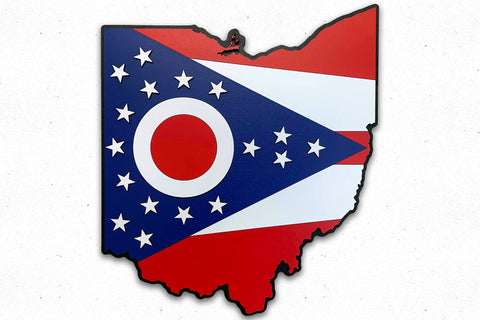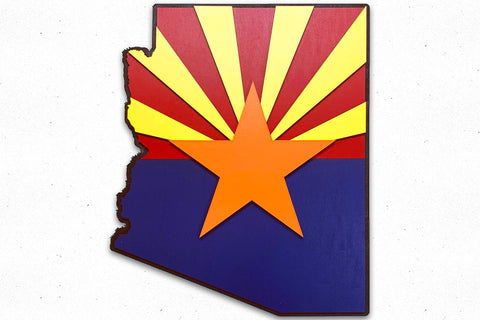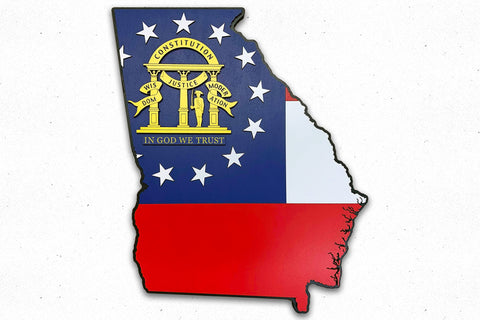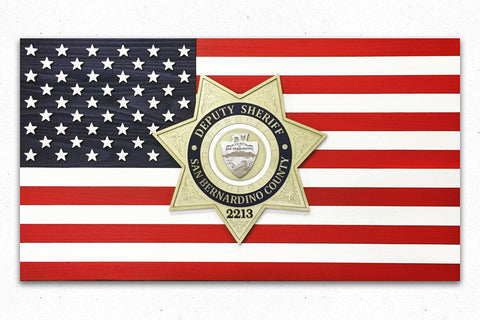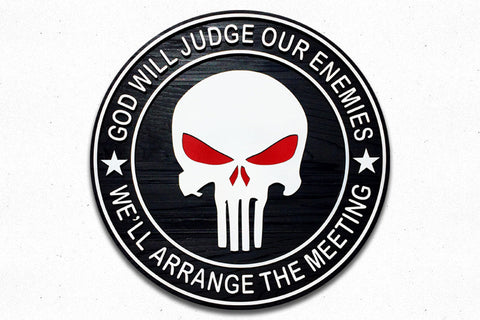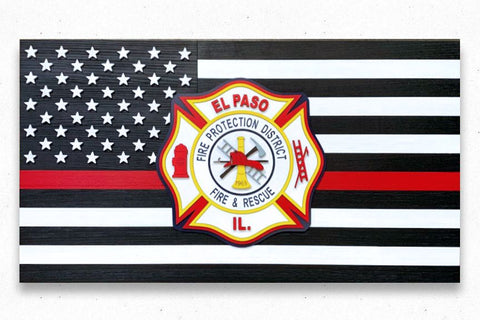We recently incorporated the Thin Blue Line emblem into a wood flag. This wood flag combines the emblem with the Stars and Stripes. This design is intended to pay homage to our law enforcement officers and add additional focus to the country they serve. Click on the images below to get your own Thin Blue Line wood flag.
Thin Blue Line Badge Vintage Wood Flag
from $ 325.00
The Thin Blue Line is an important cultural symbol whose meaning often goes unknown. You’ve probably seen it incorporated in bumper stickers—a rectangular, simple design that features a blue line placed between two black fields—but what does it mean? Is there even real meaning to it? Why would someone put this symbol on their vehicle?
For starters, the Thin Blue Line emblem isn’t just a bumper sticker; it carries much more meaning than that. From divers congregating behind a shared symbol, the Diver Down flag, to entire countries rallying behind their national flags a source of unity, people use emblems and symbols to establish their identity as part of a group. The Thin Blue Line is no different. It’s the calling card for its own special group, law enforcement. At its core, the Thin Blue Line is a symbol of solidarity for police officers and their families.
We researched The Thin Blue Line emblem when we launched our line of wood flags based on it earlier this year. We can’t claim to be part of the group this symbol represents, so we may never know its entire meaning—but we can learn more about its story all the same. If you’re interested in flags—or learning what that blue and black bumper sticker actually stands for—keep reading.

The concept of a Thin Blue Line didn’t forcefully enter popular culture until a 1988, when a documentary by the same name attained critical and popular acclaim. That film, directed by Errol Morris, told the story of a man convicted of murder and sentenced to life for a crime he did not commit. In the film, the prosecutor referenced a “thin blue line” during his closing argument, saying that the "Thin Blue Line"—or police—separated society from anarchy.
But the prosecutor’s line wasn’t the first of its kind—it was actually a clever play on a line from Rudyard Kipling’s poem “Tommy.” In this poem, Kipling refers to British soldiers as the “thin red line,” a name that described their uniform color and typical formation. Here’s the reference:
Yes, makin’ mock o’ uniforms that guard you while you sleep
Is cheaper than them uniforms, an’ they're starvation cheap;
An’ hustlin’ drunken soldiers when they're goin’ large a bit
Is five times better business than paradin’ in full kit.
Then it’s Tommy this, an’ Tommy that, an’ “Tommy, ’ow’s yer soul?”
But it's “Thin red line of ’eroes” when the drums begin to roll,
The drums begin to roll, my boys, the drums begin to roll,
O it's "Thin red line of ’eroes” when the drums begin to roll. [Source]
Kipling speaks of the “thin red line” as heroes, even though they may not be properly respected by those they protect. It’s easy to see why this saying would be repurposed to represent law enforcement. So there’s some history to the name—but that’s just the start of this emblem’s meaning.
As often the case when there’s no established, official standard that clearly states a symbol’s meaning—and even sometimes then—there’s contention over what the Thin Blue Line’s design means. Let’s start with what most people agree on: the central blue line. The common interpretation is that it stands for the border between criminals and public, order and chaos, anarchy and civilization, and decency and lawlessness—the line of police officers, the thin blue line mentioned in the documentary. It symbolizes law enforcement’s duty to protect the people through the power of the law as well as the reality that they themselves are often that thin wall.
Some interpretations would extend this metaphor to the rest of the flag. They would interpret the two sections of black to represent each of the sides represented in the blue line’s story—whether they be criminal and public, good and bad, order and chaos, or any other two opposing forces. This interpretation takes a very direct approach to symbolism: the blue line—or, police officers—is actually separating the two sides in a real, physical way.
This interpretation can be seen as lacking when one considers the traditional meanings assigned to the color black. Were two opposing sides the intended interpretation, one would expect to find a blue line separating two colors, perhaps white and black. These would better represent the two opposing forces, one standing for peace and purity, and the other a more somber color, traditionally representing death, darkness, and sickness.
That has led others to assign a different, more expected meaning to the black field on the Thin Blue Line emblem. In this interpretation, the black found on the emblem doesn’t represent two separate sections or stand for two opposing sides—it’s considered a single field, with the blue line placed atop it. Those who subscribe to this interpretation say the black stands for their fallen comrades, a somber commemoration of their brothers and sisters who were lost in the line of duty.
Whatever the intended meaning was during the emblem’s creation, it’s important to remember that symbols ultimately take on the meanings assigned to them by the people. Meanings that can change and evolve over time—meanings that can be different yet equally valid. The most important takeaway from the Thin Blue Line is understanding its significance to the people who find solidarity in it.
And if you’re interested in just the emblem, we’d be happy to create it for you. Just drop us a line on the custom-orders page and we’ll sort out the details.
Check out our line of Thin Blue Line wood flags. Get one of our handcrafted flags for your home or office.




